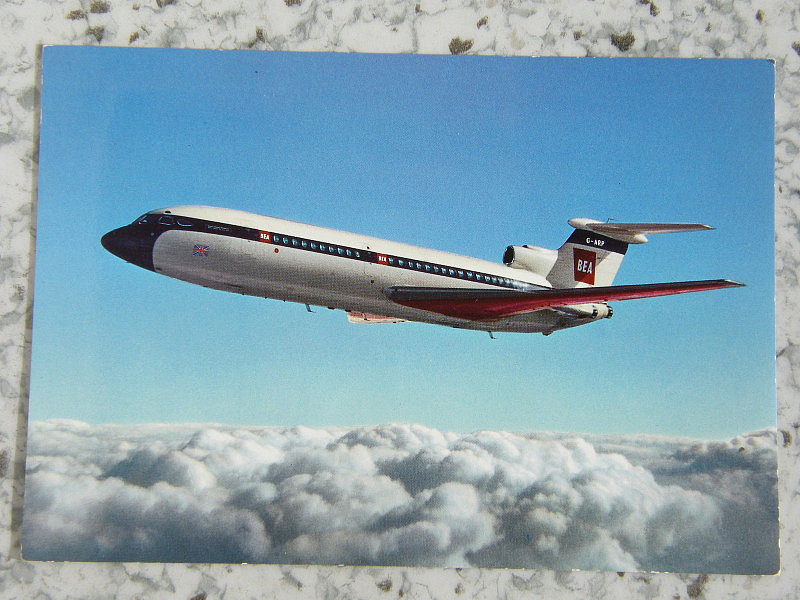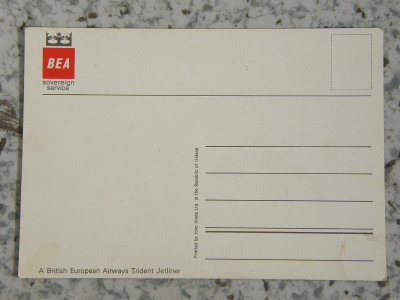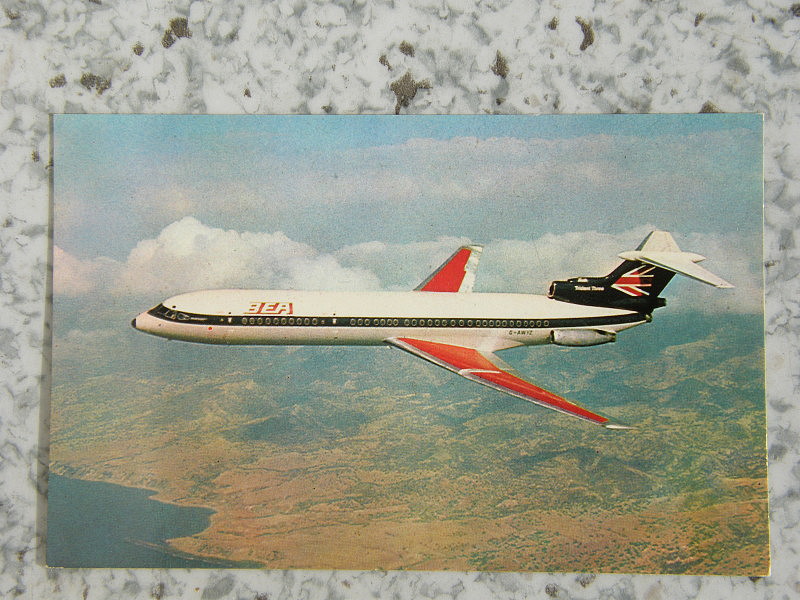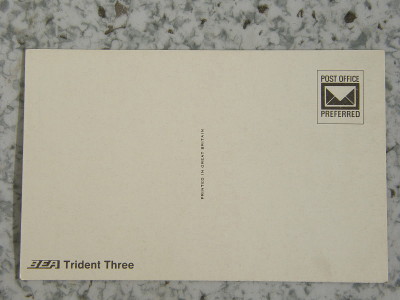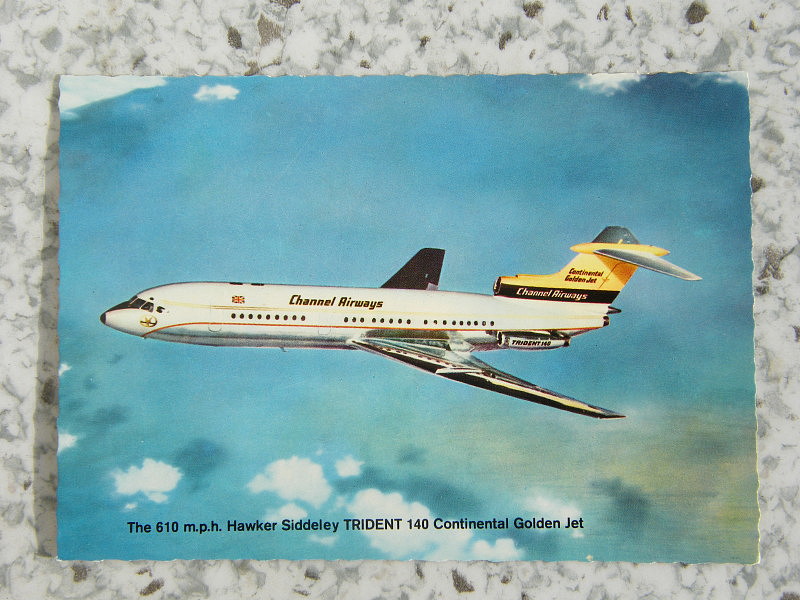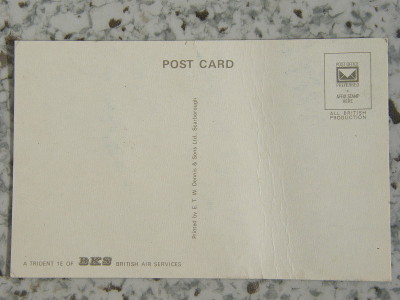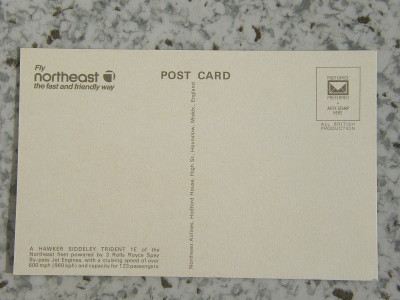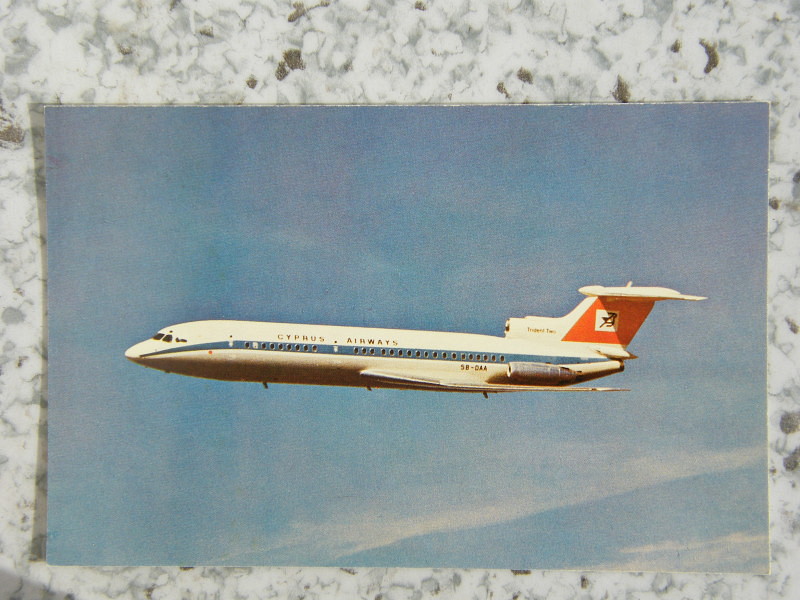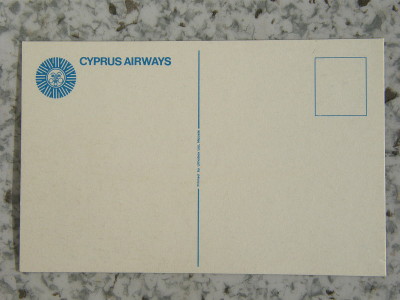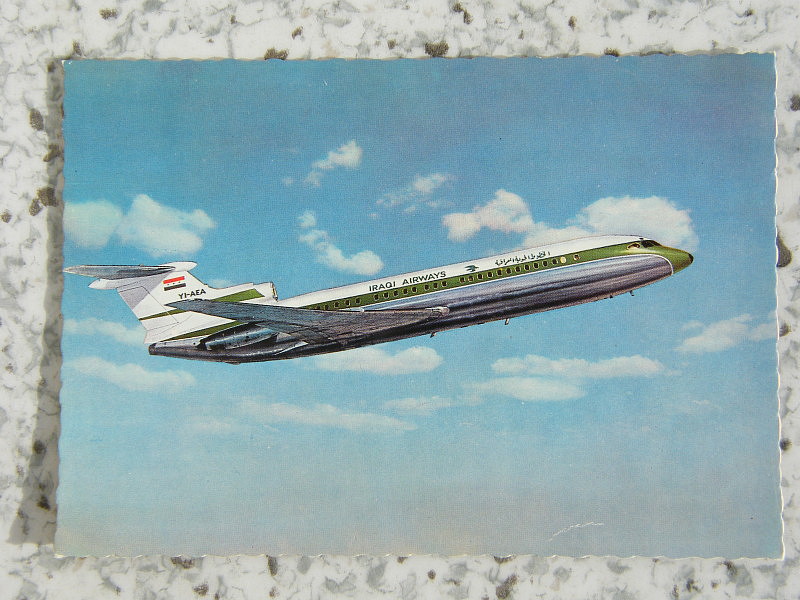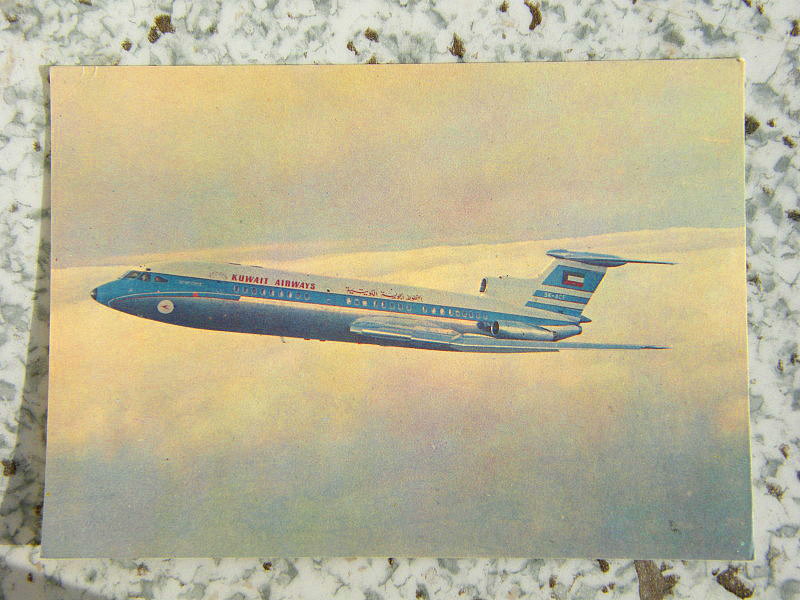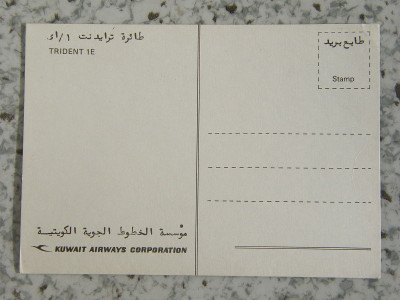HS Trident was developed according to British European Airways specifications. BEA was the first and the biggest customer.
Second biggest customer was surprisingly People's Rep.of China, which ordered 35 Tridents for its state airline CAAC as its first western-built type. All other big airlines gave preference to B727, so that just 117 Tridents were built.
They were used by just 12 airlines and 2 air forces (Pakistan, China).
BKS Air Services (later "northeast") and Channel Airways were founded by BEA for regional operations out of northeast of England and from Channel Islands. When BEA and BOAC were amalgamated on 1.4.1976, these two AL were integrated into BA as well.
Air Ceylon had used just one Trident 1969-78.
PIA used 4 Tridents in the years 1966-70 only, when sold to China.
Cyprus AW used them very shortly: one from 1969 to 1972, when sold to BEA. Four others were delivered 1970-73, but 2 were destroyed by Turkish AF during 1974 invasion of the island and another two were abandoned on not-useable Nicosia airport.
Iraqi AW used 3 Tridents 1966-77.
Kuwait AW had 3 Tridents, of which 1 crashed just 33 days after delivery in 1966. Another 2 were used 1966-72, when sold to BEA.
Air Charter Services of Zaire bought 5 Tridents from BA 1984-86. It is not known exactly, how long remained in service, but it is sure that all 5 were scrapped.
The last airline-operator of Tridents were China United AL approx. in 1988-93. Probably subsidiary of China Air Force.
TRIDENTs in commercial service could be shown on picture postcards ISSUED BY AIRLINES as a promotional item:
Have a look for photos of 10 postcards showing 9 different liveries of 8 different airlines (different by name).
Three BEA postcards are represented, as they show Trident 1, 2 and 3 and two different colours. BEA was probably the last airline to paint not only fuselage, but whole main wings as well - see all 3 postcards.
This painting was removed after the 1st oil crisis in 1973, as it added 3 % to the fuel consumption due to increased drag (paint is not so smooth as aluminium).
Trident 3 had the 4th engine (thrust approx. one third of each of the main engines) at rear just over the 3rd one. It was used during take-off only, as original engines were not strong enough for a 5 metres stretch of Trident 3 over original length of Trident 1 and 2.
This 4th engine is best visible on a BA Trident 3 postcard.
Another peculiarities are mentioned directly in the names of photos.
Postcards are of European size (cca 10x15 cm) except where stated exactly.
|
Last letter in a reggie "G-ARP." is missing. It could be a mistake or an intention. Real Tridents 1C wore |
|
Fake reggie G-ABEA, never worn by any Trident. |
|
Real reggie G-AWYZ, postcard format 9x14cm. |
|
Channel Airways with additional nice black text on a golden base "Continental Golden Jet", |
|
BKS Air Services real reggie G-AVYC, format cca 9x14 cm. |
|
"northeast" with real reggie G-AVYC, format cca 9x14 cm. |
|
British Airways - perfect view of the 4th engine RB.162-86, but no reggie on the photo shown. |
|
Cyprus Airways - real reggie 5B-DAA, format cca 9x14 cm. |
|
Iraqi Airways - real reggie YI-AEA, the only photo with "sharp straight" trailing edge of a root of vertical tail |
|
Trident 1E converted from Version 1C for Kuwait Airways, real reggie 9K-ACF. |
Petr Liška
